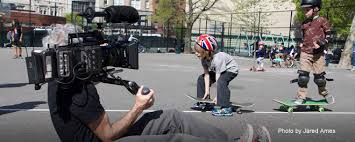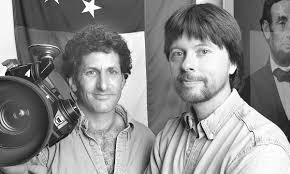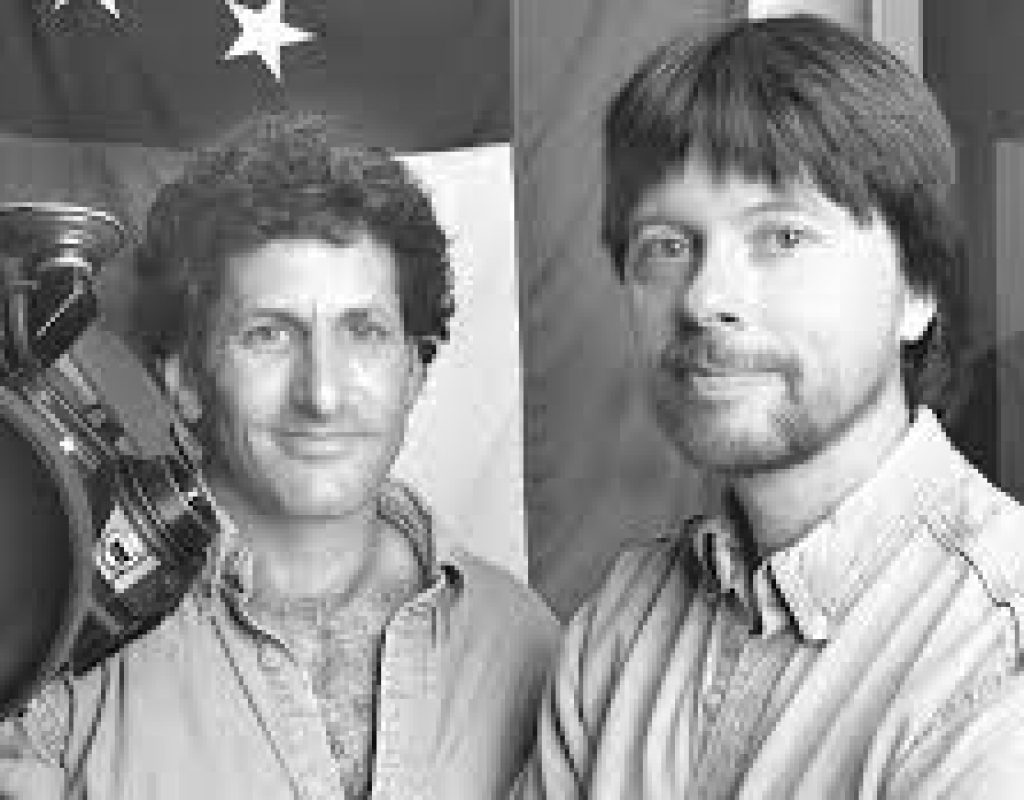He has shot more than 200 films and is a frequent collaborator with Ken Burns. Buddy Squires, ASC is an Oscar-nominated and Emmy-winning Director of Photography. If you have seen a great documentary lately than more than likely it was shot by Buddy. He is known for his work on The National Parks, The Civil War, The Vietnam War, Salinger, and The Central Park Five.
If you are in the New York City area you can hear Buddy talk at the Manhattan Edit Workshop “Sight, Sound, and Story.” This December 6th, the Manhattan Edit Workshop’s acclaimed speaker series continues with an evening devoted to the art of cinematography. At the workshop, MEW will honor the craft of visual storytelling by talking to the masters behind the camera. Tickets for the afternoon/evening event only cost $45 and audience members will also hear from Joan Churchill ASC, Igor Martinovi, and Martin Algren. If, however, you cannot make it to NYC to listen to Buddy in person PVC had the opportunity to talk to him this week for this edition of “Art of the Shot.”
https://www.youtube.com/watch?v=iWFzaUlZz-k
How did you get into the film business?
Wow, so any answers to that question. I started making short when I was in high school. I asked my teachers if I could make small films instead of writing certain papers. So I made a kind of early music video to the Who’s Baba O’Riley. I grew up in Cleveland and spent my summers in Colorado. In addition to films on teen angst, I made environmental films dealing with the burning Cuyahoga River and backpacking films in the Rockies. I had an interest in filmmaking and documentary work from a very early age. I then spent a bit of time in Berkeley and ended up at Hampshire College in Amherst, Massachusetts. At Hampshire I was fortunate to work with some great professors including the brilliant photographer Jerome Liebling who remained my dear friend and mentor until his death in 2011. Jerry and another professor named Elaine Mayes introduced me to the world of Walker Evans, Dorthea Lange, Jacob Riis, Helen Levitt, Henri Cartier-Bresson, Lewis Hine, Diane Arbus and so many others. While in college I met people I continue to work with today including Ken Burns, Karen Goodman and Kirk Simon.
What is it about documentary filmmaking. Why are you sticking with documentary film.
I love documentary filmmaking because I’m really interested in the history being made every day. I am endlessly curious about what’s going on in the world around me. This can be emergency medical workers responding to mass casualties in Afghanistan, the landscape work in The National Parks, or filming Chimpanzees in Africa with Jane Goodall. I love to be out exploring the world. Making documentaries gives me an excuse to examine every aspect of the human experience. For example, I am completing a long-term project about Pulitzer Prize winning war photographer Yannis Behrakis. In August I accompanied Yannis to the waters off coast of Libya to document the migrant crisis. I worked on The Central Park Five, an amazing film about social justice. Documentary filmmaking is a passport into the most dynamic and interesting part of people’s lives and the world we live in.
 Let me ask you this is it and I kind of this is maybe more for me and I mean this is more for shooters I guess. How do you add your personal style to a documentary like your own cinematography style?
Let me ask you this is it and I kind of this is maybe more for me and I mean this is more for shooters I guess. How do you add your personal style to a documentary like your own cinematography style?
I think any visual artist is essentially reorganizing the world in front of them in a way that makes the most sense to the individual artist. When I’m shooting a scene I’m breaking down the scene into the elements I find the most interesting and figuring out how can I communicate what I see to others. It’s really just a process of translation and it doesn’t really matter if one is a painter or still photographer or cinematographer, one is always really rebuilding the world in a way that makes sense to oneself. That is what I do all the time.
Do you know you have your sequence you can say how do you know you got what you need.
Shooting a scene is telling a short story, and if I can create a short story that makes sense to me, then I feel that scene is complete. Some stories have a beginning middle and end while others simply thrust the viewer into the middle of a particularly dynamic moment. There’s no one rule about what makes a scene. Sometimes a scene is a continuously evolving shot that lasts for two minutes. Other times 12 shots will make up a one minute sequence. It really just depends on the scene and what most truthfully, insightfully, and clearly tells the stories that I see.
What’s been your favorite project today?
Oh gosh, there are so many favorite projects. Thereʼs really no… they just run the gamut. I’ve been really fortunate to have a huge number of amazing experiences in my life. I spent three weeks with Jane Goodall filming in the hills of Gombe National Park in Tanznia. Several years ago I worked with the Dalai Lama on a film called “Compassion in Exile,” and then I worked with him again on a new film just finished this year called “The Last Dalai Lama.” I am now working on a film with prisoners earning first-rate college degrees behind bars. For The National Parks series, I spent months in the some of the most beautiful places on earth and had incredible access to those places. So sometimes it’s people, sometimes it’s events, sometimes it’s places. They’re all pretty incredible.
How do you connect to a subject like the Dalai Lama for example? Do you… I understand there’s an intimacy if youʼre with him for a while. How do you make it work
Well, working with the Dalai Lama is quite easy because he’s a genuinely open and compassionate soul. I almost want to use the word loving, but it feels trite. I think that one connects by being open, by being open to the situation in front of oneself, by being open to the people one encounters and by not clinging to preconceived notions. In verite situations, one seeks to be a witness, to probe, to ask questions and to observe without getting in the way. It’s critical to be very present and to listen. One sees that with great people in all realms. I spent time with President Bill Clinton. One sees he’s how present he is in the moment. Barak Obama does the same thing. And so I try to bring that same aspect of being really engaged and really present with whatever people, situations, or places I find myself.
 You worked with Ken Burns multiple times, what’s the benefit of repeat partnerships?
You worked with Ken Burns multiple times, what’s the benefit of repeat partnerships?
Ken and I have been working together since college. A big benefit to working with people one knows well is that one develops a shorthand, one has a language and a shared history of experiences. I love working with Ken. He is a tremendously talented, innovative and creative filmmaker. Of course, Ken is a wonderful storyteller. He knows how to see and frame a story faster than anyone I know. It is really a great joy to work with Ken and the entire Florentine Films team. Ken’s films consistently go out into the world and touch a lot of people. The Vietnam War is an extraordinary filmmaking achievement. The series reinvigorates a national discussion about the many complex meanings of that war. And, the film brings us back into the drama and trauma of that singular moment in a very powerful way.
Do you ever get emotional during these interviews? Especially when one former Vietnam Vet talked about being shot in the chest. Do you ever get emotional or are you so worried by the picture and the technical that it’s hard to be connected?
I definitely get engaged with the people that I’m filming and with the stories they are telling. I don’t think I’ve ever gotten emotional to the point where I could no longer work, but I’ve been close to tears many times. You are talking about John Musgrave – that was a very powerful interview.
Yes, I am.
Being with John Musgrave is in some ways its like being with the Dalai Lama. John is just such a thoughtful, open, and genuine spirit that it is deeply moving to be with him. Listening to his stories, feeling him going back to those dark places that were so potent for him, so terrifying for him, so revealing for him… what a honor to help bring his Vietnam war to all of us.
I’m always listening – whether I’m doing verite work, whether I’m doing interviews any kind of work that involving humans talking. The most important thing I do is listen. Listening tells me where the story is. It tells me how to understand where I want to be in a given moment. – whether I want to be paying attention to the person talking or to someone receiving information. I am interested in the interactions between people. Perhaps I want to see how something is playing out on a bystander’s face. All of these things are guided by listening. Sure technical concerns are always there, technique is always a piece of it.
It is similar to playing music. If one puts in the time, one can develop a solid command of an instrument. Mostly, however, one has to trust oneself to be fluent enough with one’s instrument, or one’s camera in this case, to be able to be present in the moment and not to be distracted by the technical. Yes, filmmaking is a highly technical art form and one key to good work is getting all the technical prep stuff out of the way before one starts shooting.
How do you approach lighting an interview?
It really depends on the subject and the context within a given film. I like to approach each interview with an understanding of how the interview is going to be used. I film interviews about the Civil War differently than a currently incarcerated person talking about the importance education in their life. Does the setting reflect or tell us something about the person in that moment? Do I want know that I am in a prison cell, is that an important piece of the story? Or do I want to make the present location go away and just create an intimate space for a conversation between the person speaking and the viewer? Does the setting reflect something about the story being told or do I want that setting to get out of the way and tell a different story? Is the mood dark and mysterious as in the Donner Party, or is it lighter and optimistic? Is the lighting natural or stylized? All these things effect how the story is going to play out. Once one knows the kind of mood and feeling one wants to portray, then the rest of it is relatively easy. Lighting becomes a matter of trying things out to see what works and what doesn’t work. It’s a process of looking at every single piece of the frame and deciding if this piece of the frame is doing what I want it to do. Does this frame have the qualities of lightness, darkness, color, shape, focus or lack of focus that lets this person come through best, that lets their story come through with the most power.
How do you stay motivated?
I love what I do. I love being with people. I love having access to them. I’m doing a film right now with Gustavo Dudamel, the Venezuelan conductor of both the LA Philharmonic and the Simon Bolivar Orchestra of Venezuela. Often in rehearsals, I get to be five feet from the conductor, crouched down somewhere between the violas and the cellos in the middle of an orchestra bringing Beethoven to life. That’s an amazing experience. Nobody gets to be there, even other members of the orchestra. I can be inches away from the conductor at the start on the downbeat, then move to the winds, the percussion, a row of first violins. I can go into the audience and experience the music as an audience member. I have free reign to be inside of a piece of Beethoven with one of the greatest conductors in the world and one of the greatest orchestras in the world. That’s very exciting.
How do you balance your work life and personal life?
I love my work and I love my family even more. Every moment I am not working, I spend with my family. I don’t believe in doing anything half way. It’s full on commitment on all fronts. Making films can be hard on family life. I travel a great deal and work very long hours, but the moment I come home I engage 100% with my family. I love being with my wife and sons and I give them as much as I possibly can.
If you werenʼt a filmmaking what would you be?
I would probably be a journalist of some sort, which is kind of the same thing. My interests have to do with understanding my own reaction to the world outside of myself. I seek that in lots of different ways. If I was not making films, I would probably find some way to be out in the mountains climbing or skiing, exploring in some way.
That sounds actually like a lot of fun. And then this would be the last question unless Iʼm forgetting anything. What would you tell your 20-year-old self? Now you could go back when this all started. What would you say?
I would tell my 20-year-old self not to waste time, to trust myself, to follow my passion.

Filmtools
Filmmakers go-to destination for pre-production, production & post production equipment!
Shop Now














